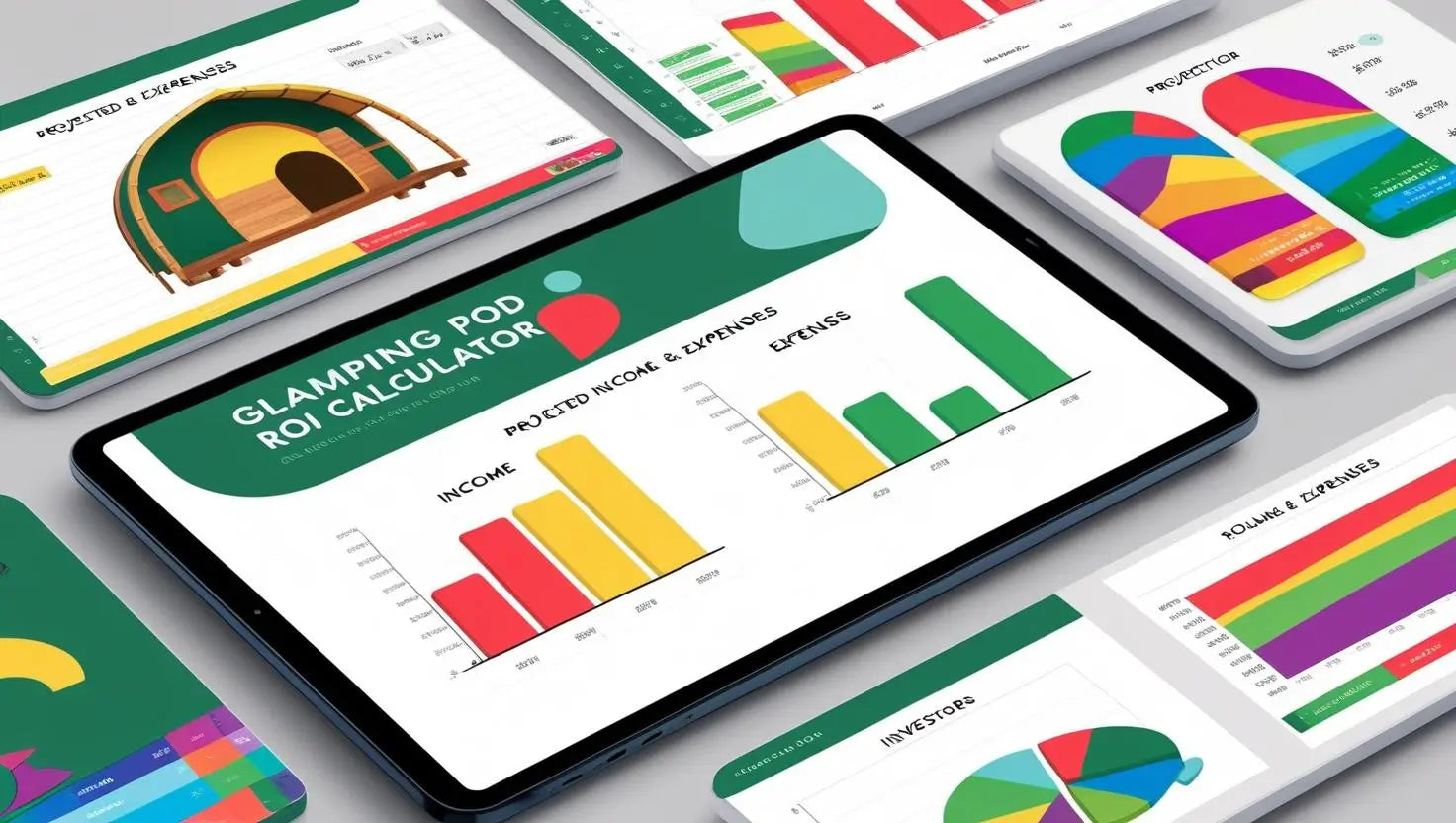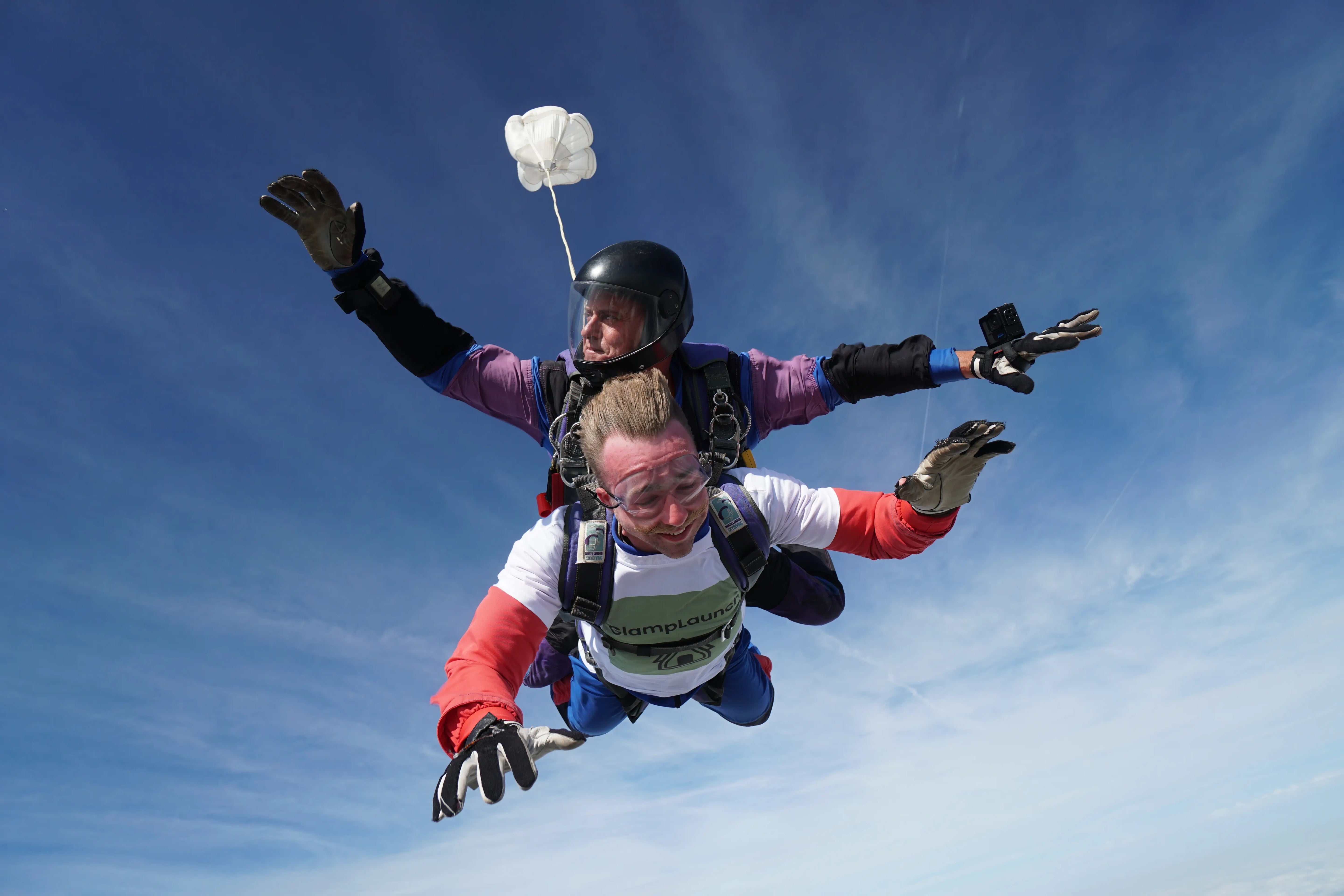Read Time: 4 mins

Launching a glamping site is exciting, but it’s also full of unknowns. Many first-time site owners underestimate the complexity of planning permission, access logistics, and long-term profitability. A beautiful piece of land doesn’t automatically translate into a viable glamping business, and the last thing you want is to invest thousands only to discover that your site can’t secure approval or won’t deliver a sustainable return.
That’s where a feasibility study comes in. It gives you a clear-eyed view of what’s possible on your land, what risks need managing, and what kind of business model you can realistically build. In short, it’s the difference between starting with confidence and stumbling into costly mistakes.
From a small cluster of shepherd huts to a phased development of multiple pods, a feasibility study ensures you’re building on solid ground, not guesswork.
1. What a Feasibility Study Actually Answers
A feasibility study is the bridge between your dream and reality. It doesn’t just ask whether pods can be placed on your land. It digs deeper into the real factors that make or break a project. The first is planning probability, which examines local designations such as AONB status, ancient woodland buffers, flood risk, and ecology constraints. This helps you understand whether approval is realistic or if you’re heading towards a likely refusal.
The second is access and utilities. Even the most attractive site will fail if delivery lorries can’t reach it, if cars dominate the landscape, or if drainage and waste solutions aren’t viable. Finally, a study tests the commercial model: what nightly rate you can charge, how occupancy levels compare to competitors, and how quickly you can expect payback on your investment.
“Feasibility is where dreams meet constraints.”
Instead of relying on guesswork, a feasibility study provides you with a decision-ready document that maps your route to planning approval and a realistic return on investment.
2. The Three Pillars of Feasibility
Every feasibility rests on three pillars. If one is weak, the entire scheme wobbles.
Planning Risk
Planning risk is about red flags and precedents. Are you in a sensitive landscape such as an AONB? Are there ancient woodland edges nearby? Do flood zones or dark-sky policies apply? Local precedent also matters: knowing how similar applications have fared can be the difference between success and refusal.
Recent changes in planning law make things easier in some cases, but don’t remove risk. Since July 2023, landowners in England can operate certain temporary glamping or camping sites for up to 60 days/year without full planning permission. However, these rights don’t apply in many protected landscapes, and permanent pods, decks, or utilities almost always require full consent.
According to CLA guidance, even so-called “temporary” pods may trigger permission if they are connected to services, fixed in place, or alter the land. These nuances are precisely why a feasibility study is valuable.
Read our blog on: “Mastering Planning Permission: How to Get Your UK Glamping Site Approved”.
Access & Utilities
Even if planners support your vision, it has to work on the ground. A feasibility study examines whether lorries and guests can safely access the site, whether parking can be screened and centralised, and how power, water, and waste will be managed. It’s about proving that the site is buildable without harming the setting.
Commercial Return
Finally, feasibility tests the business model. What are competitors charging, and where will your site fit in the market? Will you generate enough bookings to repay your initial investment in two to three years? This commercial pillar ensures the scheme isn’t just possible, it’s profitable.

3. Do You Really Need One?
Strictly speaking, very small and simple projects, such as one or two shepherd huts on low-risk farmland, might not require a full feasibility study. In practice, though, most landowners find that investing in a study is the safer option.
That’s because so many sites face hidden risks: AONB or woodland designations, access issues on rural lanes, drainage challenges on clay soils, or stricter planning rules around off-grid models. And when you’re raising finance or pitching to investors, a feasibility report isn’t just helpful, it’s essential. Lenders and councils expect hard evidence, not assumptions.
Even for small projects, the risk of refusal is real. A 2023 case in Bradworthy, Devon saw a landowner refused permission for just two pods because they failed to show sufficient local benefit and hadn’t engaged the council early. It proves that even “simple” sites can be derailed without evidence and planning strategy.
By commissioning a study, you start your project with clarity instead of uncertainty, making it the smarter route for the majority of glamping businesses.

4. What “Good” Looks Like (Checklist)
A credible feasibility study isn’t a glossy brochure. It’s an evidence pack. At a minimum, it should include:
• Maps and designations (AONB, flood, heritage, PRoW): Identify sensitive zones such as flood plains, ancient woodland buffers, or dark-sky areas. These highlight where you can and cannot build.
• Table of local precedents (recent approvals and refusals): Shows how similar applications have been treated by councils, helping you design a scheme that aligns with local policy.
• Red–Amber–Green (RAG) risk summary: Provides a clear snapshot of which issues are manageable, which need mitigation, and which may block development.
• ROI scenarios with clear payback charts: Model conservative, target, and optimistic outcomes so you can see financial risks and rewards side by side.
• Next-steps action plan: Outlines surveys, pre-app advice, and application sequencing to avoid wasted spend or delays.

5. Case Example
Consider a landowner in southern England who owned a secluded woodland site with a small lake, fully within an AONB. On first inspection, the risks seemed daunting. Ancient woodland edges, dark-sky protections, and sensitive ecology all pointed towards planning refusal.
The feasibility study, however, revealed a clear path forward. By starting with just two or three pods, keeping designs low-massing with dark finishes, and centralising all parking and drainage at an existing barn hub, the project became viable. Importantly, commercial modelling showed that even a modest launch could recover its investment within three years.
Armed with this evidence, the landowner moved to pre-application with confidence, not with a “holiday park” proposal, but with a quiet, nature-first scheme that respected the landscape.
6. Why GlampLaunch’s Study Works
Many providers sell feasibility “reports,” but not all are created equal. GlampLaunch’s studies are designed to match planning reality, not just to sell pods.
Our approach is impartial: if your site isn’t viable, we’ll say so clearly. Each study is planning-grade, incorporating policy matrices, biodiversity net gain strategies, and dark-sky compliance. We use local precedent, drawing on recent inspector decisions to guide our advice. And we go further by testing commercial clarity, offering three ROI scenarios, payback charts, and sensitivity checks.
Finally, there’s value: when you choose to order pods with us, your entire feasibility fee is credited against your purchase. It’s a practical first step that pays for itself when you move ahead with your site.
Click here to view our Feasibility Study.
Conclusion
A glamping feasibility study is not a formality. It’s your safety net. It saves time, avoids costly false starts, and provides lenders, planners, and investors with confidence in your project. For sensitive sites, AONBs, woodland edges, or finance-backed ventures, it’s essential.
At GlampLaunch, we offer impartial, evidence-led studies that blend planning expertise with commercial insight. And when you move forward with us, your full feasibility fee is credited against your pod order.
If you’re ready to take the next step, you can book a free 20-minute results call to discuss your site, or go straight ahead and order your Feasibility Study, with the fee credited in full against pods.
We can assure you that we deliver exceptional service. See what our clients say about us in our Trustpilot reviews.
Summary
• A feasibility study bridges the gap between vision and reality, testing planning risks, access viability, and commercial ROI before you invest.
• The three pillars: Planning Risk, Access & Utilities, and Commercial Return, determine whether a glamping site is viable.
• Even small sites face hidden risks like AONB restrictions, flood zones, or access issues; a study provides the evidence needed for planners, lenders, and investors.
• A strong study includes maps and designations, local precedents, a RAG risk summary, ROI modelling, and an action plan.
• Case examples show how evidence-led studies can turn high-risk sites into viable projects with the right design and strategy.
• GlampLaunch feasibility studies are impartial, planning-grade, and creditable against pod purchases, giving operators clarity, confidence, and real value.
FAQs
1. What does a glamping feasibility study cover in the UK?
A feasibility study examines three critical pillars: planning risk, access and utilities, and commercial return. It looks at land designations such as AONBs, flood zones, or ancient woodland, assesses site access and drainage, and models your ROI based on competitor rates and occupancy levels.
Together, these factors give you a clear view of whether your site is viable.
2. Do all glamping sites need a feasibility study before starting?
Very small, low-risk projects, such as one or two shepherd huts on farmland, may not need a full study. However, most landowners benefit from one, as hidden risks like ecology restrictions, drainage issues, or stricter planning rules can derail even simple sites.
For finance-backed or sensitive sites, feasibility studies are often essential to secure approval and investment.
3. How does a feasibility study improve planning permission success?
A feasibility report maps potential planning barriers and highlights local precedents for approvals and refusals. It provides a Red–Amber–Green risk summary, planning-grade evidence, and mitigation strategies to strengthen your case.
By addressing issues upfront, you reduce the risk of refusal and approach planning officers with a professional, well-supported proposal.
4. Why choose GlampLaunch for a feasibility study?
GlampLaunch delivers impartial, planning-grade feasibility studies that include policy reviews, biodiversity and dark-sky compliance, ROI modelling, and payback charts. Unlike generic reports, our studies combine planning expertise with commercial clarity.
Plus, your feasibility fee is credited in full against your pod purchase, making it a practical first step that pays for itself.





